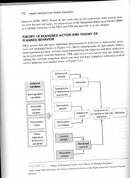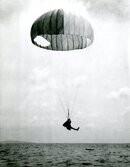I find it really interesting to see the behavior of many of you here. I spent a number of years studying safety, 30+ years practicing it as both a safety professional and industrial hygienist, several years taking coursework to acquire my Master of Science in Public Health Degree, emphasis on Industrial Hygiene, in addition to my work in the field of both combat and non-combat search and rescue as a pararescueman, and get the response I have gotten from you. I have not "tried to prove my superiority," but have tried to give you a taste for new concepts from different fields that I have studied in depth. Oh, and I've done a bit of diving since 1959 too.
I have included a Figure 4.1 from a book from one of my courses* so that you can see that I'm not making this stuff up. If you feel threatened by new ideas, then look to yourselves for the problem, not me.
This diagram combines what health professionals know as the Theory of Reasoned Action and the Theory of Planned Behavior to explain various behaviors. This can and should be used to explain these resort dives and see whether we can figure out ways to keep people from dying. That is my goal here; simply to introduce new ideas to you, even if they are as unwelcome as they currently seem to be.
By the way, no one has really given a good response to how to get someone alive but unconscious out of that cenote. (Let's theorize that the diver jumped in, landed on the tanks of another diver, and was knocked out on the surface; that makes it easier.) Until there is a good way, I would not dive it.
SeaRat
John C. Ratliff, CSP, CIH, MSPH
*Glanz, Karen, Barbara K. Rimer, K. Viswanath,
Health Behavior and Health Education, Theory, Research, and Practice, Jossey-Bass, A Wiley Imprint,
www.josseybass.com, 2008, pg. 70.





